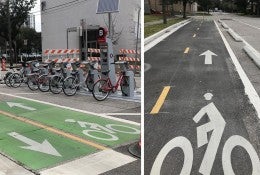Texas cities are as sprawling as ever. But they’re also more dense.
The popular perception is that Texas’s metropolitan areas are sprawling all over the place because the state has so much land. The truth of the matter is a little more complicated, however. Yes, all the metros in Texas are sprawling – but they’re densifying as well. And when you “net it out,” the density is winning over the sprawl in the big metros – while the sprawl is winning over the density in the smaller ones.





